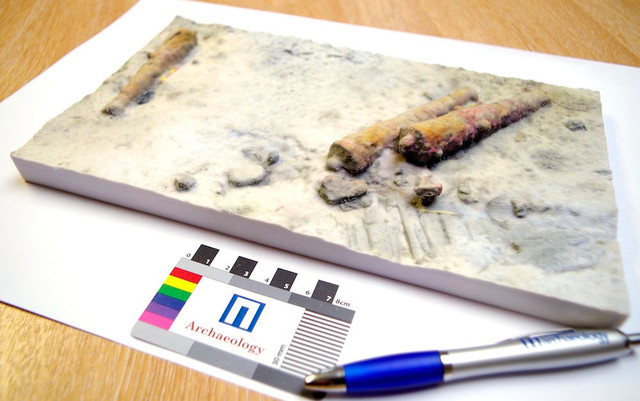
A report in Digital Trends describing how a shipwreck was recreated by 3D scanning and printing suggests some possibilities of the technology in archaeology.
The report explained how Wessex Archaeology used photogrammetry, magnetometer readings and high-res sonar techniques to create a 3D scans of two shipwreck field of debris in the Atlantic. The two wrecks include a WWI hospital ship sunk in 1915 and an earlier ship from the late 17th or 18th century.
Using the collected data, the researchers were able to develop a true 3D model of the underwater sites, which of course, was 3D printed in full color as shown at top.
Such work can show the nature of the wreck site to others unable to visit the actual site. This can provide some value even to those who CAN reach the site, as in some cases visibility could be terrible and the 3D model shows the entire site as it could never been seen in real life.
But the disadvantage is that we cannot see what’s buried beneath the surface, which in many wrecks could be considerable. There’s no way to electronically peer through the muck and digitally capture hidden artifacts and ship components that I know of.
But if this were possible, it would open up a new field of study in which a complete “digital archaeology” process could take place: a library of digital artifacts from a site would be compiled and then could be reconstructed into the original form. A sophisticated software process could even attempt to automatically reconstruct the original form from the detected components.
However, we’re obviously far away from such a state. For now, we’ll have to be satisfied with surface rep representations, from which some limited reconstructions can take place.
Via Digital Trends

